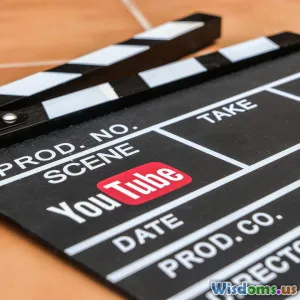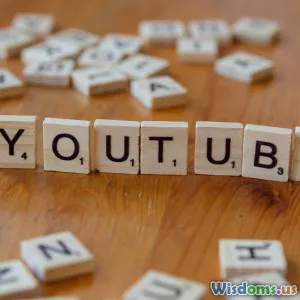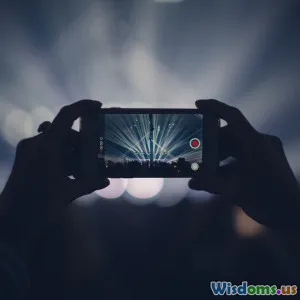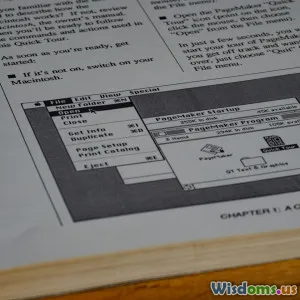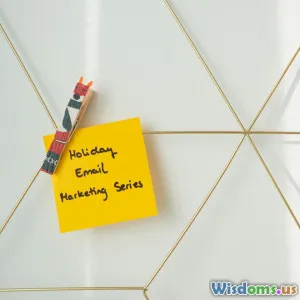
Five Proven Tricks to Hook Viewers in Video Intros
13 min read Learn five expert strategies to instantly grab attention and boost engagement in your video intros, backed by real-world examples and actionable tips for creators. (0 Reviews)
Five Proven Tricks to Hook Viewers in Video Intros
Introduction: Why Video Intros Are Make-or-Break Moments
Imagine this: You’ve crafted a brilliant video—you know your content packs value, your visuals are crisp, and your message could change lives. But there’s a problem. Twenty seconds in, viewers are dropping off. You check your analytics, and it’s clear—the beginning isn’t grabbing attention. If this sounds familiar, you’re not alone. Studies show audiences decide whether to keep watching within the first 5–10 seconds of a video. According to a 2023 Wistia report, videos retain 80% of viewers at the 1-second mark, but the number plunges to 60% by the 10-second threshold. That means your video intro isn’t just an opening; it’s the hook—the split-second moment that determines if viewers stay or go.
With over 500 hours of new video uploaded to YouTube every minute, you’re not just competing for views; you’re battling short attention spans and endless distractions. But don’t lose hope: creators and brands regularly crack this code, turning fleeting attention into dedicated followers—all by mastering one powerful piece: the video introduction.
This article unpacks five proven, actionable tricks to ensure your next video intro isn’t just watchable—it’s irresistible. We’ll explore real-world case studies, support advice with industry data, and show how to implement each strategy regardless of your niche or production budget. Whether you’re a marketer, vlogger, educator, or business owner, these tips will power up your hooks and proof your intros against viewer apathy.
1. Leverage Curiosity with a Magnetic Teaser
Why Curiosity Rules the Click
Curiosity is baked into human psychology. According to researcher George Loewenstein's "information gap theory," we feel compelled to close gaps in our knowledge. A well-placed teaser creates that gap, and viewers stick around seeking closure.
How to Use a Teaser Effectively
Open with a provocative statement, question, or preview:
- "I tried sleeping just two hours a night for a week—here's what happened."
- "Ever wondered what would happen if you deleted your entire inbox? You're about to find out."
- Show an unexplained clip: Startle your viewer with a dramatic reaction, then cut: "Stay tuned—I’ll show you why."
Check out how MrBeast (Jimmy Donaldson) kicks off his viral challenges:
"This is a $1,000,000 island, and I’m giving it to my friend."
Instantly, audiences want answers: How? Why? Who wins?
Teaser Dos and Don’ts
Do:
- Deliver on your teaser later—never bait and switch.
- Connect the teaser’s theme directly to your content’s promise.
Don’t:
- Overuse clickbait. Overpromising erodes trust quickly.
Data Snapshot
A 2022 Vidyard study found viewer engagement was 39% higher when the intro contained a clear, curiosity-driven statement. Especially in the education and DIY niches, that initial tease boosts session duration and retention rates.
2. Pack Visual Punch in the First Five Seconds
The Power of First Impressions
If you can show an exciting moment, do it immediately. Audiences process visuals 60,000x faster than text, according to 3M’s research. That means your video’s opening shot has outsized importance.
Eye-Catching Examples
- Travel Vlogs: Peter McKinnon immediately opens with cinematic drone shots and rapid visual montages before addressing the camera.
- Tutorials: When Linus Tech Tips dives into gadget reviews, you’ll often see a 'hero shot' of the tech in action, not a static intro card.
- Fitness Channels: Chloe Ting starts sessions with energetic, punchy movements and dynamic graphics, signaling energy from frame one.
Visual Tips for Maximum Impact
- Use quick jump cuts or energetic montage edits.
- Feature your protagonist or subject immediately—faces grab attention.
- Incorporate branded colors, playful typography, or quick motion graphics.
- Avoid long logo intros or drawn-out fade-ins that eat valuable attention seconds.
According to video platform Animoto, 43% of viewers lose interest when intros drag—keep visual elements tight and purposeful.
3. Promise Value—and Do It Fast
Set Clear Expectations
People don’t watch videos—they watch solutions, stories, or sensations. Deliver a compact promise within the first 10 seconds so viewers know exactly why they should commit. YouTube creator Ali Abdaal attributes his strong retention rates to value-packed intros: “I tell people exactly what they’ll get, then deliver fast.”
Methods to Promise Value
- Express Outcomes: “By the end of this video, you’ll be able to triple your productivity.”
- Highlight Benefits: “Watch until the end for my free downloadable cheat sheet.”
- Ask a Relevant Question: “Struggling with focus? Today, I’ll unpack four science-backed concentration hacks.”
Real-World Impact
Maggie King, a digital content strategist, notes that viewers are 2x more likely to stay if you articulate the payoff quickly, especially in instructional, tech, and lifestyle content. In testing, The Verge cut intro explanations from 25 to 10 seconds, boosting viewer retention by 18% on average.
The Don’ts
- Never make the viewer guess at relevance—in a crowded feed, uncertainty equals exit.
- Don’t get bogged in pleasantries ("Hope you’re all doing well!") before describing value.
4. Evoke Emotion with Relatable Storytelling
Why Stories Hook Us
Stories are hardwired into our neural circuitry; they're memorable, emotionally resonant, and create instant bonds between creator and viewer. NPR’s science correspondent Shankar Vedantam refers to the “narrative transport” effect: when a story begins, our brain’s sensory and emotional centers activate as if we’re in the experience.
How Creators Channel Storytelling
- Setting a Scene: “Last year, I was living in my car to save money. Here’s how I hustled my way out and built my dream studio.”
- Framing a Problem: "When my bakery burnt down, I thought it was over. But what happened next changed my business forever."
- Involving the Audience: “This is a story about my worst failure—and what I learned so you don’t have to repeat it.”
Storytelling in Action
Examining top TED Talks, almost every viral presentation starts with a vivid personal anecdote or mystery. Even product videos profit from stories: Blendtec’s famous “Will It Blend?” series turned a mundane blender demo into viral phenomena with comedic scenarios (
“Can it blend an iPhone? Let’s see!” ).
Emotional Range
- Humor or surprise for lighthearted brands
- Tension or suspense for true crime and drama
- Empathy for educational and personal development
Caveat: Be concise. Use the story as a wrapper for your promise, not as a time-consuming detour.
5. Quickly Invite Interaction or Challenge the Viewer
Interactive Intros: The Participation Principle
Sometimes viewers need a nudge to feel involved. Inviting interaction right at the start isn’t just about comments and likes—it’s about sparking mental engagement.
Fast Tactics for Direct Engagement
- Questions: “What’s ONE productivity habit that works for you? Drop your answer in the comments while you watch!”
- Polls or Votes: Reference polls from the previous video or introduce a new one for this episode. “Last week, 65% of you said you use digital planners. Today, I’m sharing alternatives.”
- Instant Call-to-Action: “Can you guess which tip made the biggest difference for me? Watch and see if you’re right.”
Social video platform Tubular Insights reports that videos opening with engagement cues see a 22% uptick in comments and social shares. This feedback boosts algorithmic ranking, making your videos more discoverable.
Creator Example
YouTuber MKBHD often starts with “What’s up, everybody!” but rapidly poses a question or opinion poll, sparking chat right from the jump.
Alternative Approaches
If you’re camera-shy or working with animation, overlay compelling CTAs visually—mouth-watering animation, overlay polls, or split-screen comparisons for viewer input.
Conclusion: Crafting Intros That Win Attention and Loyalty
Video intros aren’t mere formalities—they’re virtual handshakes and promises rolled into a few precious seconds. If you want to boost your retention, build loyal watchers, and spark word-of-mouth growth, putting careful creative craft into your openings is non-negotiable.
Here’s a recap of what works:
- Tease with Curiosity: Your opener should leave one question itching for an answer.
- Start with a Visual Bang: The faster and clearer the message in visuals, the longer eyes stay glued.
- Promise Crystal-Clear Value, Fast: Set and fulfill specific viewer expectations right away.
- Channel Story & Emotion: Let audiences see themselves or feel something—from the very first beat.
- Prompt Engagement: Direct, immediate cues inspire participation and keep momentum strong.
Statistics and stories from leading creators prove these pillars aren’t just theories; they’re frameworks for millions of successful opens—and you can integrate all five into any niche, style, or format, even without a blockbuster budget. Test a tighter structure, experiment with bold shots, or weave in a relatable mini-story. Then, track your analytics, compare audience retention, and iterate. Your watch time, engagement, and—ultimately—impact will reflect the difference.
Final Inspiration
“Captivating intros don’t require perfect production—they demand empathy, clarity, and confidence,” says YouTube strategist Derral Eves. The secret? Study your favorite creators’ patterns, practice deliberate opening hooks, and marry creative instincts with proven data. Your audience’s first seconds are their first impression—make every one count.
Ready to transform your next video’s opening? Pick one of these tricks, apply it, and see your analytics light up. Strong intros not only capture attention—they build anticipation for everything you’ll share next.
Rate the Post
User Reviews
Popular Posts











